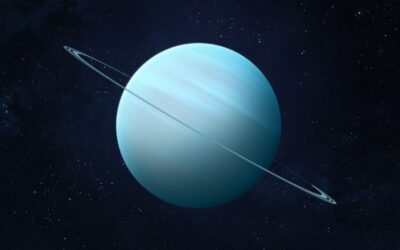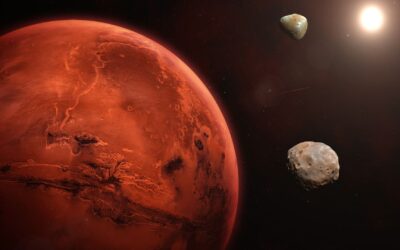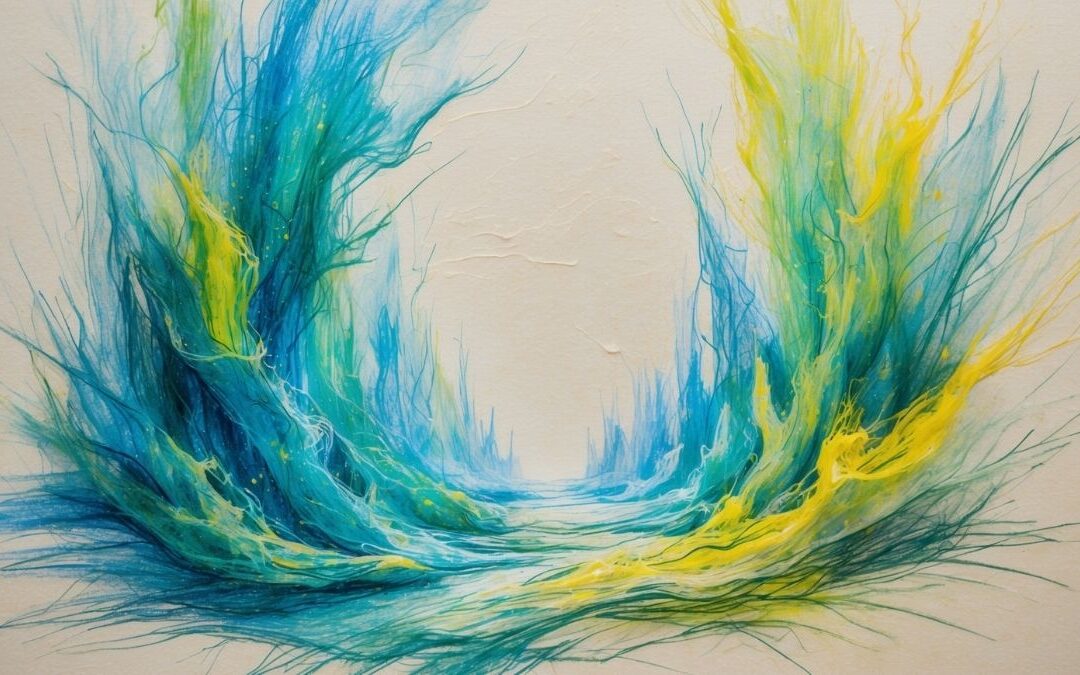- Deep Dive Intro
- A Titan of Immense Proportions: Size and Mass
- Not a Rock in Sight: Composition and Structure
- A Symphony of Stripes and Swirls: The Atmosphere
- The Eye of the Storm: The Great Red Spot
- A Loyal Entourage: Jupiter’s Moons
- A Solar System Shepherd: Jupiter’s Influence
- Peering into the Giant: Past and Future Exploration
- A World of Wonder: Why Jupiter Matters
- Reading Comprehension Quiz
- Let’s Talk | Listening Comprehension Practice
- Listening Comprehension Quiz
- Let’s Learn Vocabulary in Context
- Vocabulary Quiz
- Let’s Discuss & Write
- Learn with AI
- Let’s Play & Learn
Deep Dive Intro
In the grand cosmic ballet of our solar system, Jupiter reigns supreme. Not just because it’s the largest planet – a veritable behemoth that could swallow all the other planets whole with room to spare – but also because it’s a celestial body brimming with mysteries, a swirling, striped giant that has captivated astronomers and stargazers for centuries. Forget your terrestrial concerns for a moment and let’s embark on a journey to this colossal gas giant, a world of immense gravity, ferocious storms, and a retinue of fascinating moons. Prepare to be astounded by the sheer scale and dynamism of Jupiter, a true king among planets.
A Titan of Immense Proportions: Size and Mass
When we say Jupiter is big, we’re not kidding. Its equatorial diameter stretches to a staggering 142,984 kilometers (88,846 miles), more than eleven times the width of Earth. If our planet were a grape, Jupiter would be the size of a basketball. Its mass is equally mind-boggling, clocking in at about 318 times that of Earth. In fact, Jupiter is so massive that its gravitational influence has played a significant role in shaping the entire solar system, deflecting comets and asteroids that might otherwise pose a threat to the inner planets. It’s like the solar system’s burly bouncer, keeping things (relatively) safe.
Not a Rock in Sight: Composition and Structure
Unlike the rocky inner planets, Jupiter is a gas giant, meaning it’s primarily composed of hydrogen and helium, the same elements that make up the Sun. However, Jupiter never quite amassed enough mass to ignite nuclear fusion at its core and become a star itself. Deep within its swirling atmosphere, intense pressure compresses these gases into a metallic hydrogen layer, which is thought to be responsible for the planet’s powerful magnetic field – the strongest in the solar system. At the very center, there might be a small, dense core of rock and metal, but it remains a subject of ongoing scientific inquiry. So, if you were hoping to find solid ground for a picnic on Jupiter, you’d be sorely disappointed – you’d just keep sinking!
A Symphony of Stripes and Swirls: The Atmosphere
Jupiter’s atmosphere is a breathtaking spectacle of colorful bands, zones, and belts, all swirling in a chaotic yet strangely ordered dance. These bands are created by strong east-west winds, with lighter-colored zones rising and darker belts sinking. The vibrant hues we see are due to trace amounts of various chemicals, such as ammonia, ammonium hydrosulfide, and water ice, which react with sunlight at different altitudes. This dynamic atmosphere is also home to some of the most colossal storms in the solar system.
The Eye of the Storm: The Great Red Spot
Perhaps the most iconic feature of Jupiter is the Great Red Spot, a persistent anticyclonic storm larger than Earth that has been raging for at least 350 years, possibly even longer. Winds within this gargantuan vortex can reach speeds of up to 400 miles per hour. Scientists are still trying to fully understand the longevity and dynamics of the Great Red Spot, which, intriguingly, appears to be slowly shrinking over time. It’s like a cosmic hurricane that just refuses to quit, a testament to Jupiter’s turbulent nature.
A Loyal Entourage: Jupiter’s Moons
Jupiter boasts a vast family of moons, currently numbering over 90 confirmed satellites, with more potentially waiting to be discovered. The four largest, known as the Galilean moons (Io, Europa, Ganymede, and Callisto), were the first objects discovered to orbit a planet other than Earth, thanks to Galileo Galilei’s observations in 1610. Each of these moons is a unique world in its own right:
- Io: The most volcanically active body in the solar system, constantly spewing out sulfurous plumes that paint its surface in vibrant yellows, oranges, and reds. It’s like a cosmic pizza gone wild.
- Europa: An icy moon with a smooth surface crisscrossed by cracks, beneath which scientists believe lies a vast ocean of liquid water, potentially harboring the ingredients for life. It’s a tantalizing prospect for future exploration.
- Ganymede: The largest moon in the entire solar system, even bigger than the planet Mercury. It’s also the only moon known to have its own magnetic field.
- Callisto: The outermost of the Galilean moons, heavily cratered and icy, offering a glimpse into the early history of the solar system.
Beyond these giants, Jupiter also has a multitude of smaller, irregularly shaped moons that are thought to be captured asteroids or fragments of larger bodies.
A Solar System Shepherd: Jupiter’s Influence
Jupiter’s immense gravity has played a crucial role in the evolution of our solar system. Its presence helped to clear the inner solar system of debris during its early formation, allowing the rocky planets to coalesce. It also continues to act as a gravitational shield, deflecting a significant number of comets and asteroids that might otherwise collide with Earth. Think of it as a cosmic goalie, protecting our home planet from errant space rocks.
Peering into the Giant: Past and Future Exploration
Numerous spacecraft have visited Jupiter over the decades, providing us with invaluable insights into this enigmatic planet. NASA’s Pioneer and Voyager missions gave us our first close-up views, while the Galileo orbiter spent eight years studying the planet and its moons in detail. More recently, the Juno spacecraft, currently in orbit around Jupiter, is providing unprecedented data about its atmosphere, magnetic field, and internal structure. Future missions are planned to further explore Jupiter’s moons, particularly Europa, in the search for extraterrestrial life. Our quest to understand this gas giant is far from over, and each new discovery only deepens the allure of this magnificent world.
A World of Wonder: Why Jupiter Matters
Jupiter is more than just a big, striped ball of gas. It’s a dynamic and complex world that holds vital clues about the formation and evolution of our solar system and potentially other planetary systems beyond. Its turbulent atmosphere teaches us about extreme weather phenomena, its powerful magnetic field offers insights into planetary interiors, and its icy moons hold the tantalizing possibility of harboring life. By studying Jupiter, we not only expand our knowledge of the cosmos but also gain a deeper appreciation for the intricate and awe-inspiring nature of the universe we inhabit. So, the next time you gaze up at the night sky and spot that bright, steady light, remember you’re looking at Jupiter, the king of the planets, a world of endless wonder.
Reading Comprehension Quiz
Let’s Talk | Listening Comprehension Practice
Listening Transcript: Please don’t read the transcript before you listen and take the quiz
Jupiter, the big daddy of our solar system! Just thinking about it makes me feel tiny. The article really painted a picture of this colossal, swirling world, and it’s kind of mind-boggling to imagine something that massive just hanging out there in space.
What really got me thinking was the sheer scale of the thing. Eleven times the width of Earth! And you could fit all the other planets inside it? That’s like trying to put a bunch of marbles into a beach ball. It really puts our own little blue marble into perspective, doesn’t it? Makes you wonder about our place in the universe.
And the fact that it’s a gas giant – no solid ground! Imagine trying to land on that. You’d just keep falling… and falling… probably getting squished into metallic hydrogen along the way. Not exactly the ideal vacation spot, unless you’re really into extreme sports and don’t mind being crushed by unimaginable pressure.
The atmosphere sounds absolutely wild too, with those crazy winds and the colorful bands. It’s like a giant, cosmic abstract painting that’s constantly changing. And then there’s the Great Red Spot. A storm bigger than our entire planet that’s been raging for centuries? That’s just insane! It makes our hurricanes look like little ripples in a bathtub. I wonder what it would be like to witness that up close, though I’d definitely want to be in a very sturdy spaceship with some serious storm-proofing.
But the moons, oh man, the moons! Io, the volcanic pizza planet – that’s just such a vivid image. Europa with its potential for a hidden ocean – that’s where things get really interesting, right? The possibility of life existing in a place like that, so different from Earth… it’s enough to make your imagination run wild. And Ganymede, bigger than Mercury, with its own magnetic field! It’s like each of these moons is its own little solar system within the bigger one.
Jupiter’s role as the solar system’s bouncer is pretty cool too. Deflecting all those comets and asteroids that could potentially hit us? We owe it a big thank you, even if it doesn’t know we exist. It’s like having a giant, silent protector watching over us.
And all the missions we’ve sent there – Pioneer, Voyager, Galileo, and now Juno – it’s amazing what we’ve been able to learn just by sending these little robots out into the void. Juno sending back all that data about Jupiter’s insides? It’s like getting an X-ray of a planet. You start to understand its structure and what’s going on beneath the surface.
Thinking about future missions to Europa, that really sparks the imagination. What if there is life down there? What would it be like? Tiny microbes? Or something more… unexpected? It’s the kind of question that keeps scientists and sci-fi writers up at night.
You know, sometimes when you look up at the night sky and see that bright dot that is Jupiter, it’s easy to forget just how incredible it is. It’s not just another star; it’s this massive, dynamic world with its own unique features and its own family of moons. It makes you realize just how vast and varied our solar system is, and how much there still is to discover.
Have you ever looked at Jupiter through a telescope? Even a small one can show you those Galilean moons as tiny pinpricks of light. It’s a pretty humbling experience. It makes you feel connected to something much bigger than yourself.
What do you find most fascinating about Jupiter? Is it the size? The storms? The moons? Or maybe its role in the solar system? And what do you think are the biggest mysteries that still surround this giant planet? What are the questions you’d love to see scientists answer in the future?
For me, it’s the potential for life on Europa. That idea is just so captivating. It makes you wonder if we’re truly alone in the universe, or if there are other pockets of life thriving in unexpected places, even in our own cosmic backyard. Jupiter, the gas giant – a swirling, striped reminder of the wonders that lie beyond our own little world.
Listening Comprehension Quiz
Let’s Learn Vocabulary in Context
Alright, let’s zoom in on some of the key vocabulary and phrases we used when we were talking about Jupiter, the king of the planets. These are words that often pop up in discussions about space and astronomy, so getting familiar with them will really expand your cosmic vocabulary!
First up, we have reigns supreme. When something reigns supreme, it means it holds the highest position of power or authority. We said that in the grand cosmic ballet of our solar system, Jupiter reigns supreme. Think about a champion athlete who reigns supreme in their sport.
Then we used the word behemoth. A behemoth is something extremely large and powerful. We described Jupiter as a veritable behemoth that could swallow all the other planets. A large corporation might be referred to as a behemoth in its industry.
We also touched on the idea of a retinue of moons. A retinue is a group of advisers, assistants, or others accompanying an important person. Jupiter has a retinue of fascinating moons. A celebrity might travel with a retinue of publicists and assistants.
The article mentioned captivated astronomers and stargazers. To captivate means to attract and hold the interest and attention of someone. Jupiter has captivated astronomers and stargazers for centuries. The intricate details of the artwork captivated the museum visitors.
We used the phrase brimming with mysteries. If something is brimming with something, it means it’s full of it. We said Jupiter is a celestial body brimming with mysteries. The old house was brimming with antiques.
Then there’s the word colossal. Colossal means extremely large. We called Jupiter a colossal gas giant. The ancient statue was colossal in size.
We discussed the term veritable. Veritable means genuine or real, often used to emphasize the extent of something. We described Jupiter as a veritable behemoth. The museum housed a veritable treasure trove of artifacts.
The article brought up amassed enough mass. To amass means to gather together or accumulate a large amount of something. Jupiter never quite amassed enough mass to become a star. The collector had amassed a vast collection of stamps.
We used the term ignite nuclear fusion. To ignite means to catch fire or start burning. Nuclear fusion is a reaction in which atomic nuclei combine to form heavier nuclei, releasing vast amounts of energy – the process that powers stars. Jupiter never ignited nuclear fusion at its core. The scientists were trying to ignite nuclear fusion in the laboratory.
Finally, we talked about ongoing scientific inquiry. Inquiry means an investigation into something. Ongoing means continuously in progress. The nature of Jupiter’s core remains a subject of ongoing scientific inquiry. The police are conducting an ongoing inquiry into the incident.
So, those are ten key vocabulary words and phrases from our discussion on Jupiter. Understanding these terms will not only help you grasp more about this fascinating planet but also enrich your general vocabulary for discussing science and the world around us.
Vocabulary Quiz
Let’s Discuss & Write
Alright, now that we’ve journeyed through the wonders of Jupiter, let’s keep the cosmic conversation going! Here are some questions to get your astronomical minds thinking – feel free to share your thoughts in the comments below:
- The article highlights Jupiter’s role as a “solar system shepherd.” Do you think a planet of Jupiter’s size and location is necessary for the development of life on a planet like Earth? What might our solar system be like without it?
- The possibility of a liquid water ocean on Europa and the potential for life there is incredibly exciting. What kind of life forms do you imagine might exist in such an environment? What challenges would they face?
- The Great Red Spot is a storm that has persisted for centuries. What other extreme weather phenomena in our solar system or even on Earth do you find particularly fascinating, and why?
- With over 90 known moons, Jupiter has a complex and diverse satellite system. If you could send a probe to study any one of Jupiter’s moons in detail, which one would you choose and what specific questions would you want it to answer?
- Humanity has sent numerous missions to Jupiter. What do you think is the next big question we should try to answer about this gas giant, and what kind of technology or mission would be required to do so?
Now, let’s put on our astronaut helmets and do some writing!
Writing Prompt:
Imagine you are a member of a future crew on a long-duration mission to Jupiter. Write a journal entry describing your first impressions as your spacecraft enters Jupiter’s orbit and you get your first close-up views of the planet and its moons. Focus on the visual spectacle, your emotional reactions, and any scientific observations that particularly capture your attention.
Directions:
- Start with the date and time of your journal entry.
- Describe the initial views of Jupiter as you approach, focusing on its size, colors, and any visible atmospheric features like the bands or the Great Red Spot.
- Detail your observations of any of Jupiter’s moons that are visible, noting their appearance and any unique characteristics you can discern.
- Share your personal feelings and reactions to witnessing this awe-inspiring sight. Are you filled with wonder, excitement, a sense of insignificance, or something else?
- Include any specific scientific observations or data that stand out to you during this initial approach.
- Conclude your entry with a reflection on the significance of this moment in your mission.
Tips for Approaching the Prompt:
- Use vivid and descriptive language: Help the reader visualize what you are seeing.
- Focus on sensory details: Describe the sights, perhaps even imagined sounds or feelings.
- Incorporate your emotional response: Make the experience personal and relatable.
- Blend scientific observation with personal reflection: Show both your scientific curiosity and your human reaction.
- Maintain a journal entry format: Use first-person perspective and a conversational tone.
Sample Phrases You Might Use:
- “Stardate: [Date]. We have officially entered Jupiter’s orbit, and the view is…”
- “The sheer size of the planet is overwhelming; it dominates the entire viewport…”
- “The bands of color are even more vibrant and intricate than I ever imagined…”
- “Looking at Europa, I can’t help but wonder if…”
- “A profound sense of awe washed over me as I realized…”
Let your imaginations soar beyond Earth and capture the majesty of Jupiter through your writing!
Learn with AI
Disclaimer:
Because we believe in the importance of using AI and all other technological advances in our learning journey, we have decided to add a section called Learn with AI to add yet another perspective to our learning and see if we can learn a thing or two from AI. We mainly use Open AI, but sometimes we try other models as well. We asked AI to read what we said so far about this topic and tell us, as an expert, about other things or perspectives we might have missed and this is what we got in response.
Alright everyone, let’s put on our expert astronomer hats for one final cosmic briefing on Jupiter. We’ve covered a lot of ground, but there are always more fascinating details to explore about this magnificent gas giant.
One aspect we didn’t delve too deeply into is Jupiter’s magnetic field. It’s the strongest planetary magnetic field in our solar system, about 20,000 times more powerful than Earth’s. This immense magnetic field traps charged particles from the solar wind, accelerating them towards Jupiter’s poles, creating spectacular auroras – similar to Earth’s Northern Lights, but on a much grander scale and visible in ultraviolet light. This powerful magnetic field also creates intense radiation belts around Jupiter, which can be hazardous to spacecraft.
Another intriguing area is the ongoing research into Jupiter’s internal structure. While we know it’s primarily hydrogen and helium, the exact nature of the core and the transitions between different layers are still subjects of active investigation. Scientists are using data from missions like Juno to map Jupiter’s gravitational and magnetic fields in detail, which helps them to infer the distribution of mass and the processes occurring deep within the planet.
We also touched on the Galilean moons, but it’s worth noting the potential for habitability beyond Europa. While Europa’s subsurface ocean is a prime candidate in the search for life, some scientists also believe that Ganymede might harbor a subsurface ocean, albeit sandwiched between layers of ice. Even Callisto, the outermost Galilean moon, might have a liquid water layer deep beneath its icy surface. These possibilities make Jupiter’s moon system an incredibly compelling area for future exploration.
Furthermore, Jupiter plays a crucial role in the dynamics of the asteroid belt. Its strong gravity has cleared certain regions within the asteroid belt, creating gaps known as Kirkwood gaps. It also influences the orbits of many asteroids, sometimes even capturing them as temporary moons. This gravitational dance highlights the interconnectedness of the solar system.
Finally, the study of Jupiter can offer valuable insights into exoplanets, planets orbiting stars other than our Sun. Many of the exoplanets discovered so far are gas giants, often much larger and hotter than Jupiter. By studying Jupiter in detail, we can gain a better understanding of the formation, evolution, and atmospheric properties of these distant worlds.
So, Jupiter is not just a giant ball of gas; it’s a complex and dynamic system that continues to surprise and intrigue scientists. From its powerful magnetic field and mysterious interior to the potential for life on its icy moons and its influence on the broader solar system, Jupiter remains a cornerstone of our understanding of planetary science and a beacon for future exploration.










0 Comments